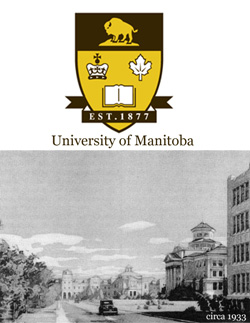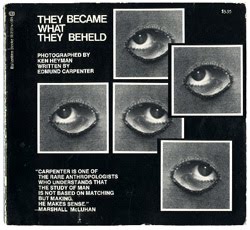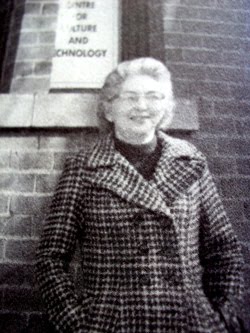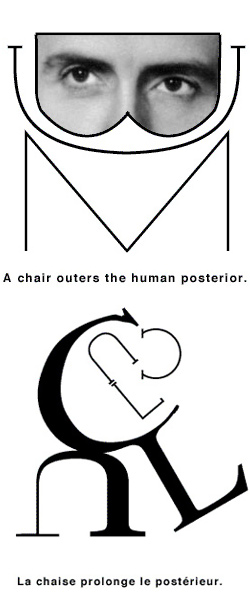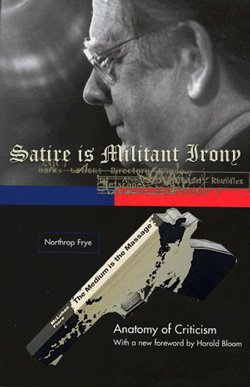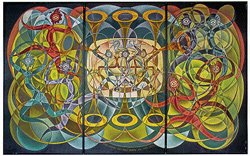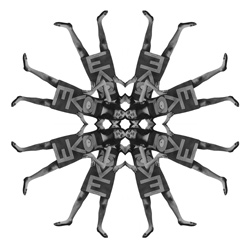"information overload implodes into pattern recognition..."
"At the speed of light, objects are unobservable, only relationships and patterns among objects are observable ..."
TECHNOLOGY AND POLITICAL CHANGE
by H. M. McLuhan
“I know about the reasons for the revolution in Mexico," wrote Karel Capek,
"but I know nothing at all about the reasons for my next-door
neighbour's quarrels. This condition of the man of today is
called world citizenship, and it arises from reading the papers." This is to say,
among other things, that no matter how much technology
reduces the intellectual and social isolation of people, their metaphysical
isolation is little affected. But the speed with which we are today abridging
the intellectual isolation of people is unquestioned.
Bergson argued that if some cosmic jokester were to speed up the
entire universe we could detect the event by the impoverishment of
mind that would ensue. If only on a planetary scale, we are now in a
position to observe the effects of such accelerated operations
socially and intellectually, because modern communications have become
geared to the speed of light, and transportation is not too far behind.
It is perhaps useful to consider that any form of communication
written, spoken, or gestured has its own aesthetic mode, and that this
mode is part of what is said. Any kind of communication has a great effect
on what you decide to say if only because it selects the
audience to whom you can say it. The unassisted human voice which
can reach at most a few dozen yards, imposes various conditions on a
speaker. However, with the invention of the alphabet the voice was
translated to a visual medium with the consequent loss of most of its
qualities and effects. But its range in time and space was thus given
enormous extension. At the same time that the distance from the
sender of the recipient of a message was extended, the number of
those able to decipher the message was decreased. Writing, in other
words, was a political revolution. It changed the nature of social
communication and control.
Intellectually, the visualization of the word may have made possible
the rise of dialectics and logic as they are found in Plato's dialogues.
And the Platonic quarrel with the Sophists, from this point
of view, may represent the clash of the older oral with the new
written mode of communication. For the written form of communication
permits the arrest of a mental process for private analysis and
contemplation, whereas the oral form is naturally concerned with the
public impact on an audience. The Platonic dialogue may well represent
a poise between the aesthetic claims and tendencies of these two forms
of expression, between dialectic and rhetoric.
The conflicting claims of dialectic and rhetoric or private and public
communication account for a good deal of subsequent intellectual and
social history. The Roman world divided the dispute in accordance
with the position of Seneca and of Cicero, and the mediaeval world
opposed the methods of study and teaching of the Fathers and the
Schoolmen. But the invention of printing or letterpress upset the
mediaeval equilibrium in this matter. For the mechanization or writing
reduced the effect of the spoken word even more than had the invention
of writing. And the cheap and rapid multiplication of books not only
extended the audience for books, but it changed the methods of study
and teaching from a social to a private mode. There arose a cult of privacy.
Western culture and religion became centered in the home and the book.
Politically speaking, this social change was felt in the new intensity of
commercial exploitation of the vernaculars. Printing fostered nationalism
when the printers sought to extend their markets as widely as possible.
For any one vernacular market of newly-taught readers was larger than
the whole European community of Latin-reading and speaking scholars.
One obvious effect of writing and printing is to bind together
long tracts of time by making past writers simultaneously available.
Associated with this effect is the republicanism of letters. Anybody,
no matter what his origin or condition, has access on equal terms to the
written messages of "the mighty dead," so that we can readily link, as
most have done, the rise of democratic attitudes to the mechanization
of writing.
As the mechanization of writing advanced in speed and cheapness,
and the daily newspaper became possible, a whole series of
unpredictable social and political consequences appeared. The press
became a source of advertising revenue, for one thing. And larger
circulation called for a larger range and variety of news. This led to
the development of news-gathering agencies and techniques of great
scale. And while the newspaper took on the format of a popular daily
book, collectively written and produced, it reversed the character of
the first printed books.
At first the book had abridged time, making the reader of any
period the social equal and contemporary of Homer, Horace, or
Petrarch. However, the new book of the people, the newspaper, created
a one-day world utterly indifferent to the past, but embracing the
whole planet. The newspaper is not a time-binder but a space-binder.
Juxtaposed simultaneously in its columns are events from the next
block with events from China and Peru. And naturally the
technologically determined format of the press has had revolutionary
political consequences. It has changed everybody's way of thinking,
seeing, feeling. Perhaps the most significant single fact about the
newspaper is its date-line.
Aesthetically speaking, a week-old newspaper is of no interest at all,
even though intellectually speaking it has exactly the same components
as today's paper. Aesthetically the newspaper creates an impact of
immediacy and of super-realism. Metaphysically its mode is
existential. Its impact is that of the very process of actualization.
The entire world becomes, in this way, a laboratory in which everybody
can watch the stages of an experiment. Everybody becomes a spectator
of the biggest show on earth - namely the entire human family in its
most gossipy intimacy. One curious aspect of the press is its willingness
to be as surrealist as possible in its handling of geography and space,
while sticking rigidly to the convention of a date-line. As soon as the
same treatment is accorded time as space, we are in the world of
Joyce's ULYSSES where it is 800 B.C. and 1904 A.D. at the same time.
And it is certain from even a casual glance at modern science fiction
that the popular mind is decades ahead of the academic mind in being
already prepared to drop the date-line on newspapers, and to range as
freely in time as in space as a means of intellectual discovery.
This spectator mentality applied not only to the external world
but to history includes the habit of seeing oneself as part of the
scene, of participating in one's own audience participation, as it
were; and it receives a final degree of extension in television
where the participants in a show can easily see the broadcast
in a studio monitor while engaged in acting the show. It is noteworthy
that the spectator attitude is explicitly associated with one of the early
newspapers. For the SPECTATOR of Steele and Addison was a commentary
on the social and intellectual scene in the days before professional
news-gathering had begun. Various inventions like the telescope, the
microscope, the spectroscope, and the camera obscura coincided with
the landscape interest in painting and poetry to foster a spectator
attitude to the world. The very idea of "views" as a way of expressing
moral and political attitudes arose at this time. Popular metaphors
naturally provide an index to changing experience.
For the student of the arts and of politics it is instructive to
observe how many of the techniques developed for example, in
picturesque poetry, not only appear in the popular novel but in the
press. In fact, most current ideas of the opposition between vulgar
and sophisticated art, or between popular and esoteric culture, are
based on a considerable ignorance of the ways in which communication
takes place in society. More specifically, the general concepts of
culture have been based on an interest in the moral and intellectual
content of art forms, to the neglect of the form itself as a major
component of the expression. As attention has widened to see any
culture as a communication network, it has become apparent that there
are no non-cultural areas in any society. There is no kind of object
or activity that has not some rapport with the entire network.
The beloved detective story will serve as an example of a
supposedly non-cultural type of expression. Built around the character
of an omniscient and omni-competent sleuth whose lineage stretches
backwards from Holmes to Da Vinci it manages to be popular poetry
about the modern city. The sleuth is a master of every facet of the
city. With the skill of an organist at a five-keyboard instrument, he
can touch any note or level of metropolitan life. He is familiar with
all the dives and clubs. He knows the whole range of drinks, foods,
clothes, perfumes, as well as every intricacy of transportation routes
and schedules. Anybody in the future who wished to acquaint himself
with the full range and texture of the modern big town would not be
able to find in reputable novels anything comparable to the poetic
reportage of the detective story. The raw mechanical power that is
imparted to the ordinary metropolitan citizen by his milieu is found
in the gestures and idiom of the sleuth.
But much more remarkable, as cultural expression, is the form of
the detective story. Written backwards, in order that the effect of
the story may always be the exact reconstruction of a crime, the form
is based on the same method as that employed in laboratory experiment
and in modem historiography, archaeology, and mechanical production.
But the detective story preceded these sciences in the discovery of
this method. It is only one striking instance of popular expression
which has its tap-root in the deepest intuitions of our culture.
If the mechanization of writing had some such typical effects as
have been suggested, it is not too surprising that its extreme
development should have coincided with a tendency to switch from words
to pictures. This switch was already under way in the eighteenth
century with its spectator outlook and passion for landscape in the
arts. By the nineteenth century the demand for illustrations for
letter-press became very strong, not only in the book and newspaper
but also in the very form taken by the esoteric arts, as for instance
Rimbaud's ILLUMINATIONS. Photography and cinema may be seen as the
response to prolonged pressure of demand rather than as gratuitous
inventions. Perhaps they can be viewed as ultimate or extreme
mechanizations of writing. More probably, however, telegraphy has
claims to be considered the extreme verge of the mechanization of
writing beyond which one enters the Marconi world of the mechanization
of speech.
Like any extreme these processes reversed the original effect,
and tended to separate people from the printed word. So that in
pictorial papers and magazines even words take on the character of
landscape. Variety of types is employed to build up the page as a
visual unit rather than as a mere linear transmission of printed
words. The Chinese never had an alphabet, but their ideograms are
pictorial translations of human gestures and relationships. As our
press has become more pictorial our whole culture has become more
sympathetic to Chinese art and expression. So that the very features
of our culture which have intruded disruptively into the East have
also brought us a basis for approaching their kinds of communication.
Modern advertising is a world of ideograms.
There have been so many domestic and social revolutions
associated with the consequences of the mechanization of writing that
it is natural to wonder why so little attention has been given to the
matter. Without any special awareness of just what revolutions we have
been through we have hurried from the age of cinema into the era of
television. Between cinema and television we managed to squeeze in
radio, the mechanization of speech.
By way of obeisance to our own ingenuity, people have often felt
obliged to marvel at radio and television by exclaiming: "Although
it's happening over there, it's also happening right here." This kind
of self-hypnosis is undertaken in a spirit of uneasy propitiation of
the new god. But the real power of these deities is exerted when we
aren't looking. The mechanization of speech meant that the most
intimate whispers or the most ordinary tones of conversation could be
sent everywhere instantly from anywhere. Beside the effects of this
revolution in communication even those associated with the invention
of writing and printing are trivial events. Radio meant the widest
dispersal of the human voice and also the ultimate dispersal of
attention. For listening is not hearing any more than looking is
reading. And all the networks of human communication are becoming so
jammed that very few messages are reaching their destination. Mental
starvation in the midst of plenty is as much a feature of mass
communication as of mass production.
The stereotypes of advertising have been developed as the nexus
between mass consumption and mass production. Advertising has been the
means of organizing the mass market. For advertisements are
constructed scientifically as machines to stream-line and channel the
multiplicity of human desires until they are effectively geared to
production. A more effective mode of psychological collectivization
could not be imagined than that imposed by the giant stereotypes of
the desirable which are insinuated, without argument but with intimate
urgency, by the symbolist techniques of visual and auditory appeal in
advertisements. These stereotypes are not the product of chance but of
careful investigation and experiment with the human recipients. For
the present time the realities of political and social change are to
be studied in this area. Among other things, these changes mean that
events cannot be reported if they involve a degree of complexity in
excess of the available stereotypes, so that in modern diplomacy the
negotiators will naturally refuse to attempt a working agreement that
cannot be followed by or reported to non-professionals. There must be
some simple moral or national formula to hand for the diplomats to
depend upon, such as will justify them to the half-listening, half-
waking world hour by hour and day by day. In this way the new media
have compelled history and actuality to feign a simplicity that just
isn't there. Thus the magic and mythic power so characteristic of the
mass media, having first hypnotized the recipients of their messages,
have then, in effect, pronounced the real world to be an illegitimate
and reprehensible territory. The same sort of paradox is inherent in
the movie as a night-time therapy applied to the victims of dream
routines of daily work.
It would be too much in the spirit of the current effect of the
new media to brand these and allied developments as deplorable. For,
if the new reality of our time is in the main a collective dream or
nightmare brought about by the mechanization of speech (television
takes the final step of mechanizing the expressiveness of the human
figure and gesture) then we must learn the art of using all our wits
in a dream world, as did James Joyce in FINNEGANS WAKE.

On looking closely at the newspaper once more, it becomes
evident that as a popular art form it embraces the world spatially but
under the sign of a single day. The newspaper as a late stage in the
mechanization of writing is handicapped in taking the next step, which
occurs easily in radio and television, namely to cover not only many
spaces but many times, or history, simultaneously. But even the
newspaper has long felt the pressure to take this step. In juxtaposing
items from Russia, India, Iran and England, it is plain that there is
also a diversity of historical times that are being artificially and
arbitrarily elucidated under a single date line. Even in so intimate
and influential a fact as dress design, modern archaeology has
increased the range of style and idiom to include in a single season
types of attire developed many thousands of years apart. The TIME AND
WESTERN MAN of Mr. Wyndham Lewis is the classic study of the romantic
stigmata of the enthusiastic time-traveller. But the further
development of communication in space as in historical time, has
tended to lessen the romantic appeal of distant times and customs in
favour of a direct stylistic interest in their immediate value and
relevance. The modern study of the past, as of distant places, has the
effect of making them as much a part of the present as our own
problems. So that for the modern mind history has become not a
receding perspective but a present burden.
This cumulative effect of our techniques of production and of
communication has been felt everywhere in the world as an impatience
with "the dead hand of the past." As we become more familiar with the
components of this revolutionary state of mind we shall discover in
our social life as in our private life that there is no past that is
dead. And that "the dead hand of the past" is an indispensable guide
in the present.
In other words when communication devices have achieved the
speed of light, there occurs a social and historical simultaneity as
well as a local and temporal one. And since the various societies of
our world comprise many ages, as well as many places, the immediate
effect of modern communication in overlaying all of these is to create
dislocation and distress. The first impulse of reason is to cry out
for uniformity at any cost, to prevent further waste, confusion, and
madness. A clean sweep, a new start, and the abolition of historical
differences seem to be demanded for mere survival.
It would seem that even so superficial an examination of the
impact of technology on culture and politics poses some useful matters
for study. The great political discovery of the eighteenth century was
social equality. The principal insight of this century to date is
perhaps the anthropologist's awareness of cultural equality. Modern
anthropologists, deeply influenced by our new skills in communication,
have arrived at the conviction that all cultures are equal. That is to
say, that seen as communication networks, all cultures past or present
represent a uniquely valuable response to specific problems in
interpersonal and inter-social communication. This position amounts to
no more than saying that any known language possesses qualities of
expressiveness not to be found in any other language. But as a matter
of practical politics the awareness of cultural equality (a by-product
of new techniques of communication) will certainly prove as benign a
force as can be imagined, because it frees each society from the odium
of inferiority or the arrogance of superiority. Each is free to learn
from all the others while possessing itself in quiet.
And by way of abating some of the dread most people feel towards
the power of mass communications at present it might be well to
consider how with radio or the mechanization of human speech, the
hustings and the forum have given way to the round table and face-to-
face discussion in the presence of small audiences. Also, with
television has come a weakening of the magic and myth of the movie
"star." It appears that the intimacy and immediacy of the flexible television
camera and screen are much less favourable to the star system than
the movie camera and its giant screen on to which are poured such
dreams as money can buy.
INTERNATIONAL JOURNAL, Vol.7, Summer, 1952, pp.189-95
Toronto, June 1952.













![et cetera : LOVE [1977]](https://blogger.googleusercontent.com/img/b/R29vZ2xl/AVvXsEgQ8s7vwLQuzHDNgqlfBacxRkEbOErToak9kmgFl0VmyIYEqS9qIzNIVcXKpzTncPhqo3TSgOyztAguIW6OlXw65aFHmpx6cRzmvCUQQMTwUGUOd0iE0GbJakEc3g3kBAJrvlZP4z3eesg/s1600/etc1977.jpg)









![MAC LUHAN [sic] : LOST IN TRANSLATION](https://blogger.googleusercontent.com/img/b/R29vZ2xl/AVvXsEg92tMqBMDA917NDivsS2ZwIirx9KTf24tOCgFFnK65p7Hw5dvqEh1e2aefCynj2UW8u-k8zwBXbjgypsCXUcv-5G7ZCsyDB13giHEjmhVISAeW-oI_JV6ePOXW_XBDPwy2nREAoqRU7Z8/s1600/MAC.jpg)






















![Les Yeux De Nadja [unpublished]](https://blogger.googleusercontent.com/img/b/R29vZ2xl/AVvXsEgrXohpIuxxYyjKoqBSQf3TpYGjnttZnjRFvmMdshadfnVKi7PMAjIqEuqYctZFXOFH2n-oH75oJx-YkaON7xvaZgVdvaK0zfSOurEmCKqmWF6qXh2F3VbqyixfGhvY4qH6LENMTs1wCIw/s1600/2xsurreal.jpg)
















![PIED PIPERS [MARSH] ALL](https://blogger.googleusercontent.com/img/b/R29vZ2xl/AVvXsEhqvGIGG9lWZYhFZRVc_V8EJG2apQBsys4kNQOQsA0EV6H6Tg-SMN0sX15NXy_GzsF3xAUdcb2QlfvJk-RU-Rha-3Eu5Mnglkf5KLe6pccVqAP4VR_Gi4fGQ716QSmDe3Zna5Uwct5d2sw/s1600/piedPiperMarshALL270.png)



























































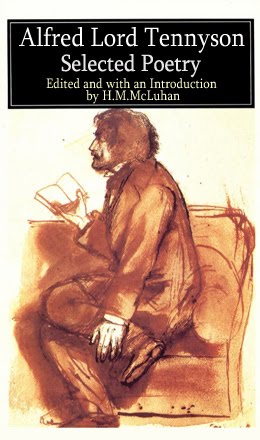

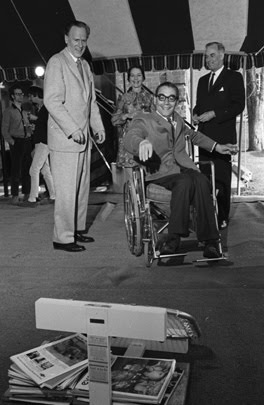




![PICNIC IN SPACE : The Great Minds of Our Time Film Series [1973]](https://blogger.googleusercontent.com/img/b/R29vZ2xl/AVvXsEjyov75DRIUBWcYLkzPYmupFy8CQ9dQ4Q798zDIN6jPNsSdBB_WuOcvPl4WjMAz10csG071oCO3BCUtIcKyHoIkCN0lCy0OxGCV_HrLXrGNKRpUiKMrqzkJh4LSc7jT_KrrqmClapSlVa8/s1600-r/PicnicInSpace.jpg)


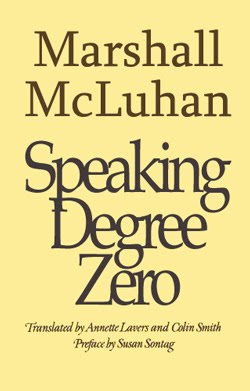

























![more Hidden ground [re:Bride] : the "flippancy" of tone seemed just "right"](https://blogger.googleusercontent.com/img/b/R29vZ2xl/AVvXsEg-hQyF9KGGhKYc73nUGmV1bStJ4fTJVh0-TL1ZtikLZEv5ppjhB3DOhFcVuzGq-kByrwtTAWgCcE173pA3UTIPe7h6xJjsPt7lRvNym007ZsdXenMDLNimKcwtaTOqkGleoxmXOeCKtxXL/s1600-r/LEAVISLEWIS.png)
















![BABA WAWA [TODAY SHOW, Toronto City Hall 1970]](https://blogger.googleusercontent.com/img/b/R29vZ2xl/AVvXsEjTZAIFkA07K36WGk951vmZnLPU99fOdNzlvVhyphenhyphenhKZEKu2n2AW5EA1CDZGaTk0aYRXUv7IOXG39igaikoE6SWm8j7QIG96wYRE54oBXwvlaNCJzp15vdkrcqR97IMMny-8sHjM-VDotTOaY/s1600-r/babaWawa.jpg)

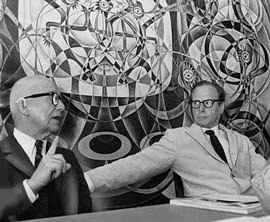

![enter the dragon : "typhon in america" [unpublished]](https://blogger.googleusercontent.com/img/b/R29vZ2xl/AVvXsEjdCnZdJ6JbaLc6hyUmUJo5UJ0m8WZSj_afYU9oRlHKIUgAIfcy2EPHNAptSRYEAmpOf0Xaa0B8iMgOTF302lY0Xmbyne0hvrdRyNo-t0Q-PPdzqX39uI3T5x5FppRPaQf9sSaXytrOpWVN/s1600-r/TIA.jpg)




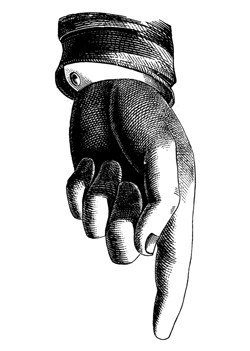






















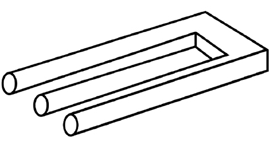









![Take Today [1972] : "the consumer becomes a producer..."](https://blogger.googleusercontent.com/img/b/R29vZ2xl/AVvXsEhA53bdVdTaXdQo1fDmrsI8oiAwF-3jampcanOq8uk3QMh8_ImkNsTiKd4-RnZY8Vbwqh1fymJiyCl1CSLcSonXHQM6XbnJYQi_Vu89gbAV4jVq73EtlbM3w6CthyphenhyphenV_pHEjE6eu_VhC489u/s1600-r/PROSUMER.jpg)
























































































![" Outtragedy of poetscalds!, Acomedy of letters " [ FW 425.24]](https://blogger.googleusercontent.com/img/b/R29vZ2xl/AVvXsEhJMrJLN3oPUb25A2tjQtWZcZxA4wZB0IOvaIAvxosAUqlFc258HHvzvlnHHvKhKq7hG3epo76izY2Bu0HC3Cy-8S46Rf0Wni3L8j8jEfpT7sXK3UFlXBMtN2v2JdrmdxvWk8VWKjkhN4-9/s1600-r/preplexLP.png)











![mars[HAL]9000 : " Tomorrow is our permanent address."](https://blogger.googleusercontent.com/img/b/R29vZ2xl/AVvXsEhmblupqmUiuV3GbyayJiDRGEO63TEgwjHi-i8b0kVYDvXrKFWTCyl-e21la4QJXC4nDFDzx51Omi6fYPLJcqRHFoP6zSsL0CVZF98eMf6mxCE2WDfvMmT4q9G3X45-P0IYGDmliE0fCR3C/s1600-r/marsHAL9000_250.jpg)




























































































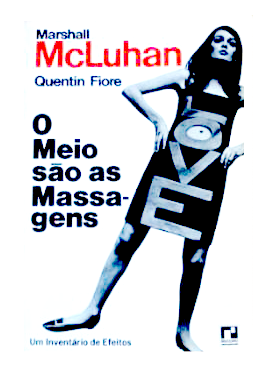





































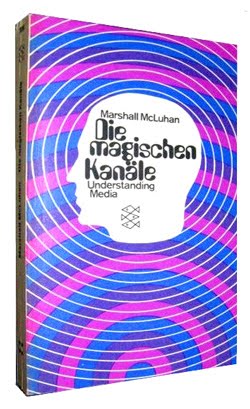







































































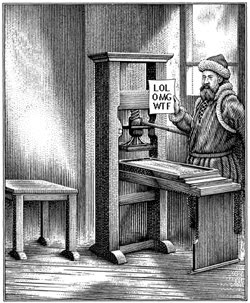








![Lucifer [from Latin] <br>meaning "light-bearer"](https://blogger.googleusercontent.com/img/b/R29vZ2xl/AVvXsEhq-2kZZOfh-Syv1Ewa0Ns2O6ZeP59pcsJp9ihhKcXCaovYZO_cKxffC5iSKOXFHr6E1jiHc6zedt1U6I95831RgpVdm3qk8-9C3y1yPyrCiQe4jgx-DsbeHnjKnw9t6Qx3ZM5TSYxiPj5H/s1600-r/lucifer.png)


